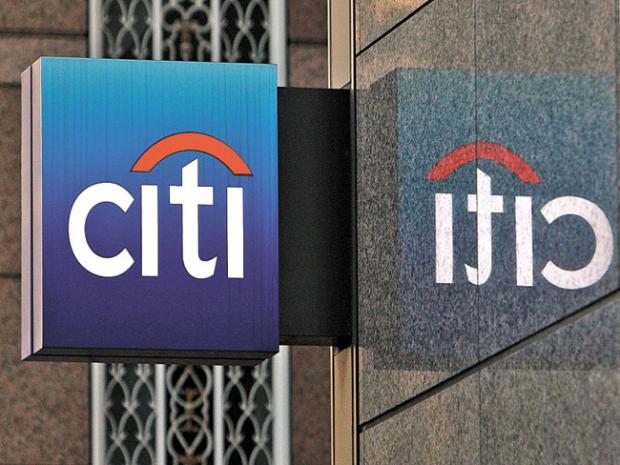Buying a house is a very emotional decision and has a huge financial impact, so an increase in income usually leads to a rise in demand for bigger homes. The demand has been increasing over the years because of the virtuous effect of the factors like young demographics and increasing urbanisation. To know more about the housing sector in the country, Anil Kaul, Managing Director, TATA Capital Housing Finance Ltd, had an interaction with Shruti Jain of Elets News Network (ENN).
With the ongoing urbanisation, the demand for housing in India has been rising alongside the growing population. What opportunities do you see for yourself ?
India is a rapidly urbanising country and about 32-33 per cent of India lives in cities. Next couple of years, it is expected to go up to about 37 per cent to 38 per cent, which is lesser compared to much smaller nations in Asia. This represents a great opportunity for TCHFL to assist their customers in fulfilling their aspiration of buying their dream house as more and more people move to the cities.
According to industry experts, urban areas have a shortage of 10 million units, and it is estimated that 25 million units of affordable housing will be required by 2030 to meet the growth in the country’s urban population. This will lead to an exponential increase in the housing loan demand.
Our belief in our industry’s growth is based on the structural factors which characterise our country. 65-66 per cent of our population is less than 35 years, this is a population, with much larger aspirations. They want better lifestyles and a larger and better house is a key element of this aspiration. These young men and women are working and aspiring for a better lifestyle. This is a very large demand pool and is going to stay like this for a couple of decades to come. The housing sector has hence witnessed tremendous growth in recent times with the rise in demand for both residential as well as commercial spaces.
A report suggests that cities could produce as much as 70 per cent of India’s GDP by 2030 and lead to a four-fold increase in per capita income across the country. Furthermore, there has been an increasing disposable income over the last two decades and a greater societal acceptance of taking debt towards buying a house. This implies that customers can now afford to spend more on housing.
Buying a house is a very emotional decision and has a huge financial impact, so an increase in income usually leads to a rise in demand for bigger homes. The demand has been increasing over the years because of the virtuous effect of the factors like young demographics and increasing urbanisation.
We at Tata Capital believe that there is a strong and well-proven demand which exists for the housing sector in the country. To meet this growing demand, we have increased our reach and strategically brought in many more channel partners, and added more branches. We are planning to go to about two hundred branches in the next year or so – which will give us the opportunity to offer our mortgage solutions to new customers. We offer all products like home loans, loans against property, and loans to developers.
We are making appropriate investments in technology and workforce to meet this demand.
India’s residential sector accounts for more than 80 per cent of the country’s real estate market. How is the sector performing post the pandemic? Do you see green shoots?
The pandemic has brought in a cultural shift in the organisations and employees about greater acceptance of remote working including working from home as compared to conventional practice. This has acted as a catalyst for more home buyers looking to move into bigger houses. Residential sales in cities are now back to the pre-pandemic levels and in most cases even better.
The housing finance demand looks positive due to high demand for residential real estate. Sales velocity of 1.5 lakh units in H1 of CY2022 in top 8 markets has witnessed 60 per cent growth compared to the same period last year. The recent increase in real estate prices has further fuelled the demand for residential real estate across both salaried and self-employed customers.
commercial real estate which is largely driven by positive economic growth with higher demand from the services and IT sector. Around 2.5 lakh crore square feet was absorbed across the top 8 markets in H1 of CY2022, which witnessed a growth of 107 per cent as compared to the same period last year.
Green shoots are visible in terms of price appreciation and lower overhang across many micro-markets. This has resulted in new launches across cities both in residential and commercial real estate. The recent increase in policy interest rates has not materially changed the demand robustness yet in this sector. The total Mortgage Market is Rs.35 trillion with HFCs’ and Banks’ contributions being 33 per cent and 67 per cent respectively.
The Pradhan Mantri Awas Yojana (PMAY) received Rs. 48,000 billion from the Union Budget 2022–2023 announced by the finance minister. How will this help in ensuring a better reach to the housing for all visions?
Let me answer this by saying that a big demand accelerator has been on account of regulatory and policy interventions like RERA, PMAY, and smart city schemes. Fiscal incentives, tax incentives, and subsidies for buyers and developers have played a vital role in the growth of this sector.
These policy interventions enabled a structured, transparent, and disciplined ecosystem in the sector.
Specifically, the PMAY scheme started with the goal to make affordable housing accessible to the vast sections of society especially to those who are economically vulnerable. in the country. The scheme has benefited the Economically Weaker Section (EWS), Low Income Group (LIG), and Medium Income Group (MIG) people who were able to afford a home for their families. The PMAY scheme has been a huge enabler in driving demand for housing in the country.
Government initiatives to further promote “Housing for All” in the 75th year of independence coupled with smart cities projects across cities having best-in-class living facilities, etc. have contributed to the upward trend of the real estate sector.
Tata Capital Housing Finance Ltd has been one of the leading HFCs to support the mission of affordable housing via the PMAY scheme extended by the Government of India. PMAY subsidy benefit under CLSS scheme has already been extended to thousands of customers across the country by us. We continuously work under the guidance of the regulator to increase the number of such beneficiaries who are able to avail the benefits across various policy initiatives for PSL , green funding etc.
The continuation of Pradhan Mantri Awas Yojna (Urban) till 2024 will surely be a major boost to uplift the sentiments of the consumers and help the end user in buying their dream homes.
The Reserve Bank of India has undertaken numerous initiatives to enhance and facilitate the flow of credit to various sectors and parts of the economy in order to facilitate greater financial inclusion. How do you see the initiatives in terms of the Housing Finance segment?
The government has created an Affordable Housing Fund (AHF) in the National Housing Bank (NHB) with an initial corpus of Rs. 10,000 crores (US$ 1.43 billion). So, we understand that NHB has planned to disburse Rs. 10,000 Cr in FY 23 to boost priority sector housing. TCHFL has been a highly active participant in the PSL scheme and has ensured that the benefits reach the of customer segments for whom this scheme is designed.
NHB is providing long-term refinance to Scheduled Commercial Banks and HFCs to promote residential Individual Home loans.
Uncertainty in the business climate is not new to industries across the world. What keeps you motivated and how are you planning your next year in terms of innovations?
As I said earlier, our industry is looking forward to multi-decade growth because of a variety of factors that are positive for housing demand. Around 65 per cent of our population is less than 35 years, with clearly much larger aspirations – which is a key driver of this housing demand.
Urbanisation, digitisation, better infrastructure, and connectivity will be the next contributor to the massive demand growth expected in this industry. We at TCHFL believe that there is a strong and well-demonstrated demand which exists for housing plans in the country.
Digitisation has been a focus at TCHFL for the last couple of years because it was very evident that customers’ expectations are changing very fast in the VUCA world. We were the first in the industry to completely digitise the restructuring applications under the COVID-induced one-time restructuring benefit extended by the RBI. This customer- centricity approach which is core to us ensured that we were able to serve our customers even better during the tough times of Covid. We make every effort to digitise the onboarding journey for new clients as well as the servicing journey for existing clients. This saves time, effort, and cost for the firm as well as the customers.
TCHFL has also been successful in using data analytics across the lending value chain, starting from customer acquisition, credit underwriting, portfolio monitoring, and debt servicing.
The laser focus and continuous effort have ensured that we have been able to customise our product and service offerings to varied customer segments. This has resulted in our becoming one of the largest housing finance companies in the country, with an ROE of 17 per cent plus, making TCHFL one of the leading HFCs in the country.
Superior financial returns on a sustainable basis using strong risk mitigation mechanisms will continue to remain our focus always.
Elets The Banking and Finance Post Magazine has carved out a niche for itself in the crowded market with exclusive & unique content. Get in-depth insights on trend-setting innovations & transformation in the BFSI sector. Best offers for Print + Digital issues! Subscribe here➔ www.eletsonline.com/subscription/
















